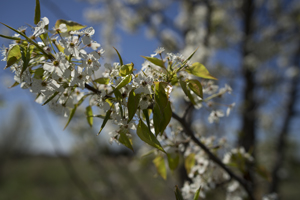Other
Sony FE 35 Match-up: Is More, More?
Time to trash the adapters?
Sony has just released a new line of full frame FE lenses that will hopefully eliminate the need to use adapters with lenses from other systems. We just received the Sony FE 35mm F/1.4 ZA Distagon which has the largest aperture in the lineup and we couldn’t wait to have a look at it. Will this replace the petite FE 35mm F/2.8 ZA Sonnar? Probably not for the photographer who enjoys fitting a camera/lens combo in her purse. For the low light lover, bokeh buff, and adapter averse? Let’s find out.
Before I show you fair comparisons of each lens at F/2.8, here are photos taken with each lens at its widest aperture.
Both images were captured on the same camera and tripod setup, so it looks like the Distagon is actually a touch wider even though they are both technically 35mm. Will this make a difference? Not really.
And now for a better look at those out of focus areas I threw the focus ring all the way to the closest focus. With everything blurred it is easy to notice the variations in color between the two images. The shape in the highlights is slightly different with a noticeable increase in softness in the 35mm F1.4.
Time for the contrast challenge. Here is a mix of light and dark subject matter in bright sunlight. Both lenses seem to handle the situation without obvious aberrations, but the solid background makes it easy to see the vignetting in the 35mm F/2.8.
Another thing to consider with these two lenses is the difference in minimum focusing distance. It’s handy to purpose wide angle lenses as macros when possible. The FE 35mm F/2.8 has a minimum focusing distance of 13.8in while the F/1.4 version lets you get as close as 11.76in. And in my experience, 2 inches can really make a difference.
Okay, onward and upward (literally). Let’s take a look at flare. As I have noted, the 35mm f/1.4 has a more buttery quality in the out of focus areas. When put against the sun it doesn’t seem to hold together as well as the f/2.8 version, exchanging creamy blur for flatter color and more blown out highlights.
And for the final event, landscape photographers, here are two images shot at f/8 focused at infinity. Again, the vignetting and color in the sky is noticeable. What we really want to know, though, which one is sharper. Right?
This is an interesting comparison. The center of each image is very comparable as shown in the 100% crop. You may notice, however, that the edges of the 35mm F/1.4 lose some clarity. This is especially apparent on the left side of this particular image. This is not a flaw of the lens, but due to the curvature in the field of focus. It’s commonly thought that the wider the aperture, the sharper the lens is stopped down. We have seen in our labs at Lensrentals that this is often not the case. Many lenses made to open as wide as F/1.4 are built with a field of focus pattern that have one or several curves making them less desirable for shooting landscapes or architecture.

Sonnar at F/8 1/500 ISO 100 (100% Center Crop)

Distagon at F/8 1/500 ISO 100 (100% Center Crop)
One last thing to consider when comparing these lenses is the size. The 35mm F1.4 weighs in at 1.39 lbs while the smaller 35mm F/2.8 is only .26 lbs. The weight alone could be a deciding factor.

I’m really impressed with the image quality of the Sonnar F/2.8. This lens is tiny, sharp, and half the price of the Distagon F/1.4. Am I a sucker, like many others, for the smooth F/1.4 lowlight capable lens? Definitely. And I will probably use it whenever I am renting. For the consumer looking to purchase, however, the FE 35mm F/2.8 looks like a smart choice.
Sarah McAlexander
Author: Sarah McAlexander
I’m Sarah. I have a BFA in Photography from the University of Memphis. I’ve been shooting professionally for over 6 years. When I’m not working here or freelancing, I enjoy yoga and traveling.
-
Hubert Baierl
-
Satya
-
BurntAsh
-
Daniel Ortego
-
Jan
-
Mel Snyder
-
RJA
-
E.J. Peiker
-
Thomas Stanworth
-
paul
-
Jack
-
Tired Of Fly Wire
-
Tony
-
Philip Partridge
-
Ed
-
Mark Giglio
-
Amos
-
Frank Kolwicz












